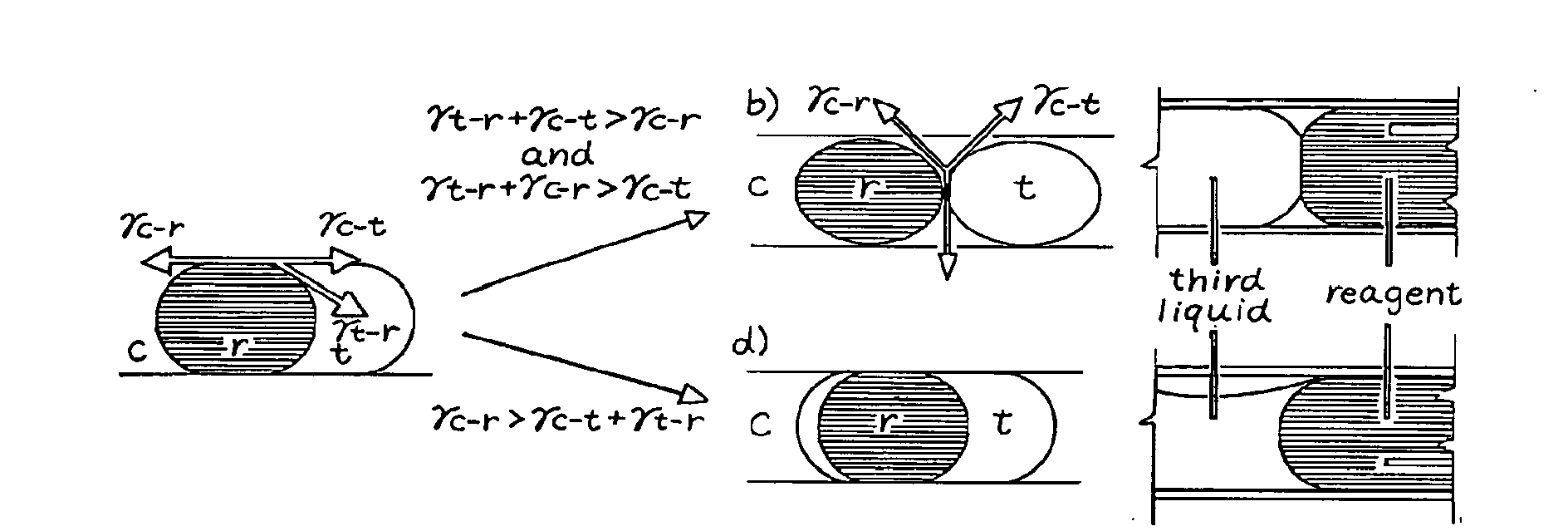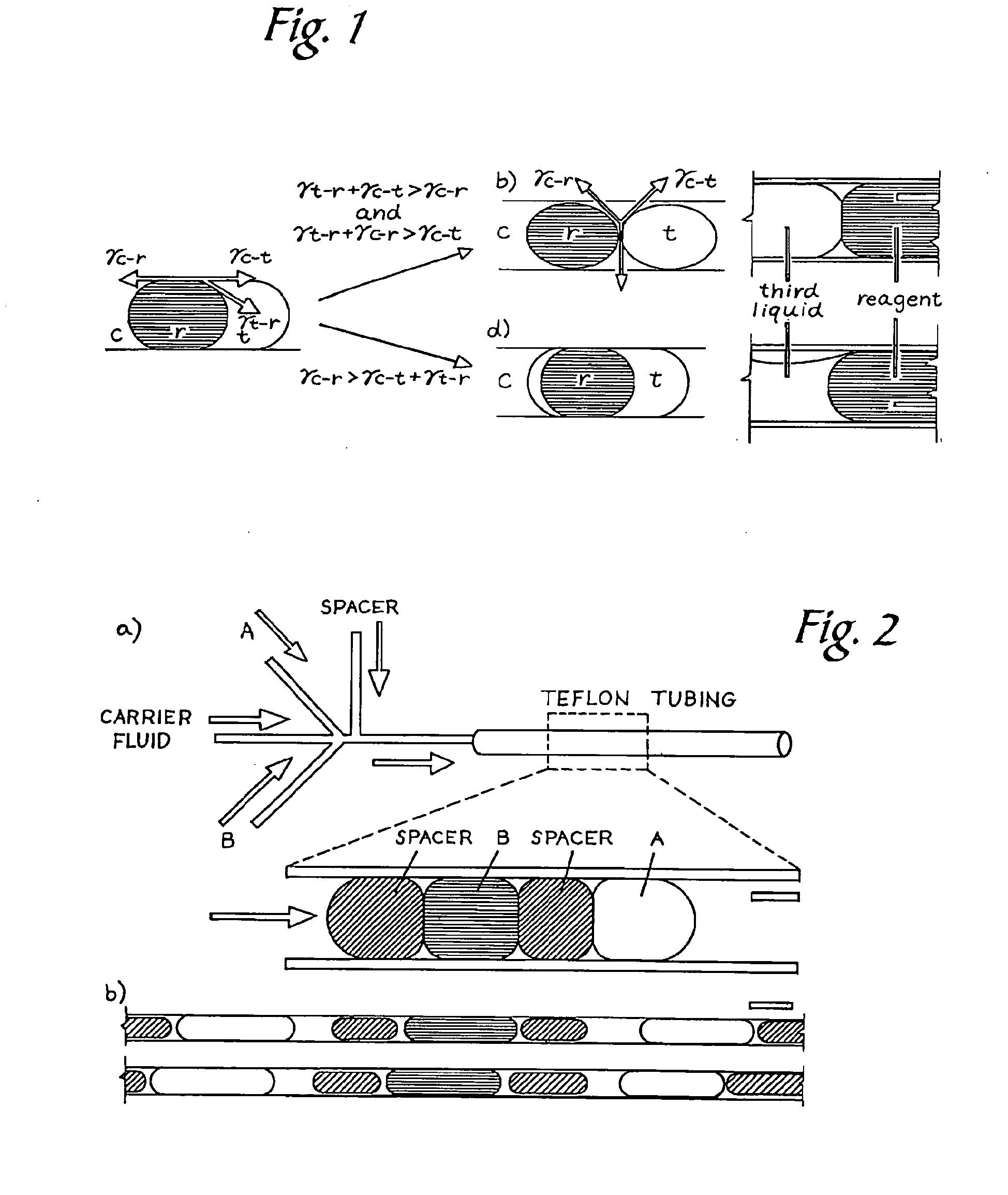Spacers for Microfluidic Channels
a microfluidic channel and spacer technology, applied in the direction of diaphragm valves, laboratory glassware, engine diaphragms, etc., can solve the problems of difficult to locate an individual plug within a sequence of plugs, change the size of plugs, and undesirable manipulation of interfaces for some applications
- Summary
- Abstract
- Description
- Claims
- Application Information
AI Technical Summary
Benefits of technology
Problems solved by technology
Method used
Image
Examples
example
[0050]Materials. The glycerol solutions were made in water, and the percentage concentrations were by volume unless otherwise stated. The three carrier fluids were fluorocarbons used with or without the surfactant 1,1,2,2-tetrahydroperfluorooctanol (PFO), provided by Alfa Aesar, MA: (1) FC40, provided by Acros Organics, NJ; (2) FC70; and (3) FC3283, both provided by 3M, MN. 1,3-Diphenyl-1,1,3,3-tetramethyldisiloxane (SID) was purchased from Gelest, PA. Dimethyl tetrafluorosuccinate (DTFS) was obtained from Synquest, FL. Protein Tdp1 (N-terminal truncation (Δ1-148) of the human tyrosyl-DNA phosphodiesterase with an N-terminal His-tag, expressed in Escherichia coli) was provided by deCODE Biostructures, WA. The protein solution was provided frozen, at a concentration of about 6.7 mg / mL in a buffer containing about 250 mM NaCl, about 15 mM Tris (pH about 8.2), and about 2 mM Tris(2-carboxyethyl)-phosphine (TCEP). A detailed description of the protein expression and purification can be ...
PUM
 Login to View More
Login to View More Abstract
Description
Claims
Application Information
 Login to View More
Login to View More - R&D
- Intellectual Property
- Life Sciences
- Materials
- Tech Scout
- Unparalleled Data Quality
- Higher Quality Content
- 60% Fewer Hallucinations
Browse by: Latest US Patents, China's latest patents, Technical Efficacy Thesaurus, Application Domain, Technology Topic, Popular Technical Reports.
© 2025 PatSnap. All rights reserved.Legal|Privacy policy|Modern Slavery Act Transparency Statement|Sitemap|About US| Contact US: help@patsnap.com



